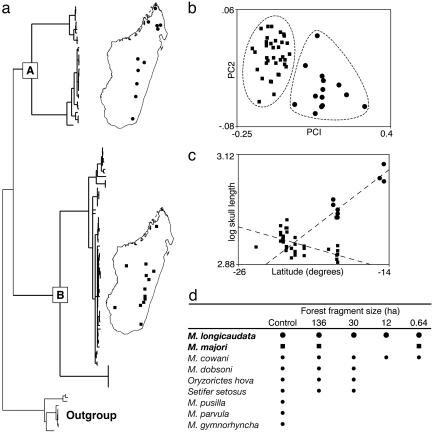Fig. 3.
Overview of the approach used to clarify species limits in long-tailed shrew tenrecs and the subsequent insights into geographic variation and community structure. (a) Phylogeographic analysis of mtDNA recovers two cryptic, highly divergent, yet broadly sympatric (and in many cases syntopic), haplotype clades (clades A and B) within the single nominal species of long-tailed shrew tenrec, M. longicaudata. (b) Despite their striking morphological similarity, members of each haplotype clade are readily distinguished by both a priori and a posteriori morphometric analyses, supporting the recognition of two cryptic species, M. longicaudata (clade A, round symbols) and M. majori (clade B, square symbols). (c) The revised species-level taxonomy provides insights into biogeography and geographic variation. For example, contrasting patterns of clinal variation in body size were previously obscured. (d) Reevaluation of a published study of tenrec community assembly in fragmented forest patches (79) in light of the revised taxonomy shows that both species coexist in remarkably small habitat patches. Sequences are deposited in the GenBank database under accession nos. AY193297-AY193416. (Adapted from figures and text in ref. 11.)

